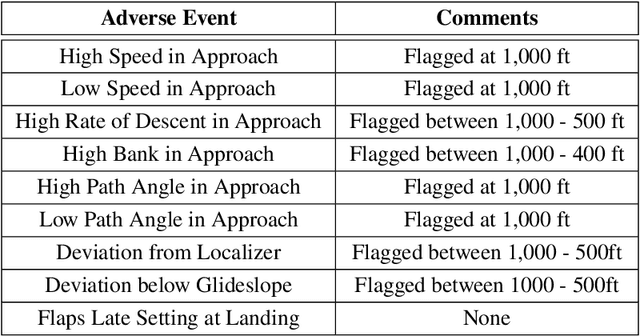Multi-Class Multiple Instance Learning for Predicting Precursors to Aviation Safety Events
Paper and Code
Mar 10, 2021



In recent years, there has been a rapid growth in the application of machine learning techniques that leverage aviation data collected from commercial airline operations to improve safety. Anomaly detection and predictive maintenance have been the main targets for machine learning applications. However, this paper focuses on the identification of precursors, which is a relatively newer application. Precursors are events correlated with adverse events that happen prior to the adverse event itself. Therefore, precursor mining provides many benefits including understanding the reasons behind a safety incident and the ability to identify signatures, which can be tracked throughout a flight to alert the operators of the potential for an adverse event in the future. This work proposes using the multiple-instance learning (MIL) framework, a weakly supervised learning task, combined with carefully designed binary classifier leveraging a Multi-Head Convolutional Neural Network-Recurrent Neural Network (MHCNN-RNN) architecture. Multi-class classifiers are then created and compared, enabling the prediction of different adverse events for any given flight by combining binary classifiers, and by modifying the MHCNN-RNN to handle multiple outputs. Results obtained showed that the multiple binary classifiers perform better and are able to accurately forecast high speed and high path angle events during the approach phase. Multiple binary classifiers are also capable of determining the aircraft's parameters that are correlated to these events. The identified parameters can be considered precursors to the events and may be studied/tracked further to prevent these events in the future.
 Add to Chrome
Add to Chrome Add to Firefox
Add to Firefox Add to Edge
Add to Edge